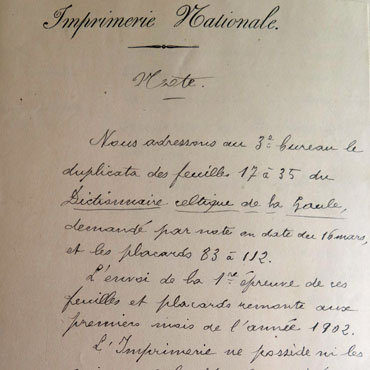
- Home
- Portrait gallery
- CTG associates
- Salomon Reinach (1852-1932)
This portrait, whose photographer is unknown, shows a young Salomon Reinach, leaning on the balustrade of the terrace of the château of Saint-Germain-en-Laye.
© MAN
An archaeologist, philologist, epigraphist and historian of art and religions, Salomon Reinach’s great scholarship left a considerable mark on his time.
A field archaeologist and specialist of the Mediterranean basin
Salomon Reinach trained as an archaeologist at the École française in Athens from 1880 to 1882 and carried out excavations on the necropolis of Myrina. He then became secretary of the Commission archéologique de Tunisie in 1883, taking part in excavations at Carthage. He was elected a member of the Académie des inscriptions et belles-lettres in 1896 and became its president in 1906. From 1903, he edited the Revue archéologique and, particularly interested in civilisations and their myths, in 1905, he published the fruit of several decades of work: Cultes, Mythes et Religions.
A museum man
In 1886, he was named assistant curator of the musée des Antiquités nationales, before becoming deputy curator in 1893, and director from 1902 to 1932. He was the author of numerous guides and catalogues based on the museum’s collections, as well as publications for more general readership. From 1902 to 1918, he held the chair of national archaeology at the École du Louvre and, from 1905 to 1910, he delivered courses in the history of painting.
While at the musée des Antiquités nationales, he was asked by the Ministry of Education to successfully complete the Dictionnaire archéologique de la Gaule, whose completion he oversaw alongside Camille Jullian and Émile Espérandieu.
To find our more, see Hervé Duchêne’s biography.

